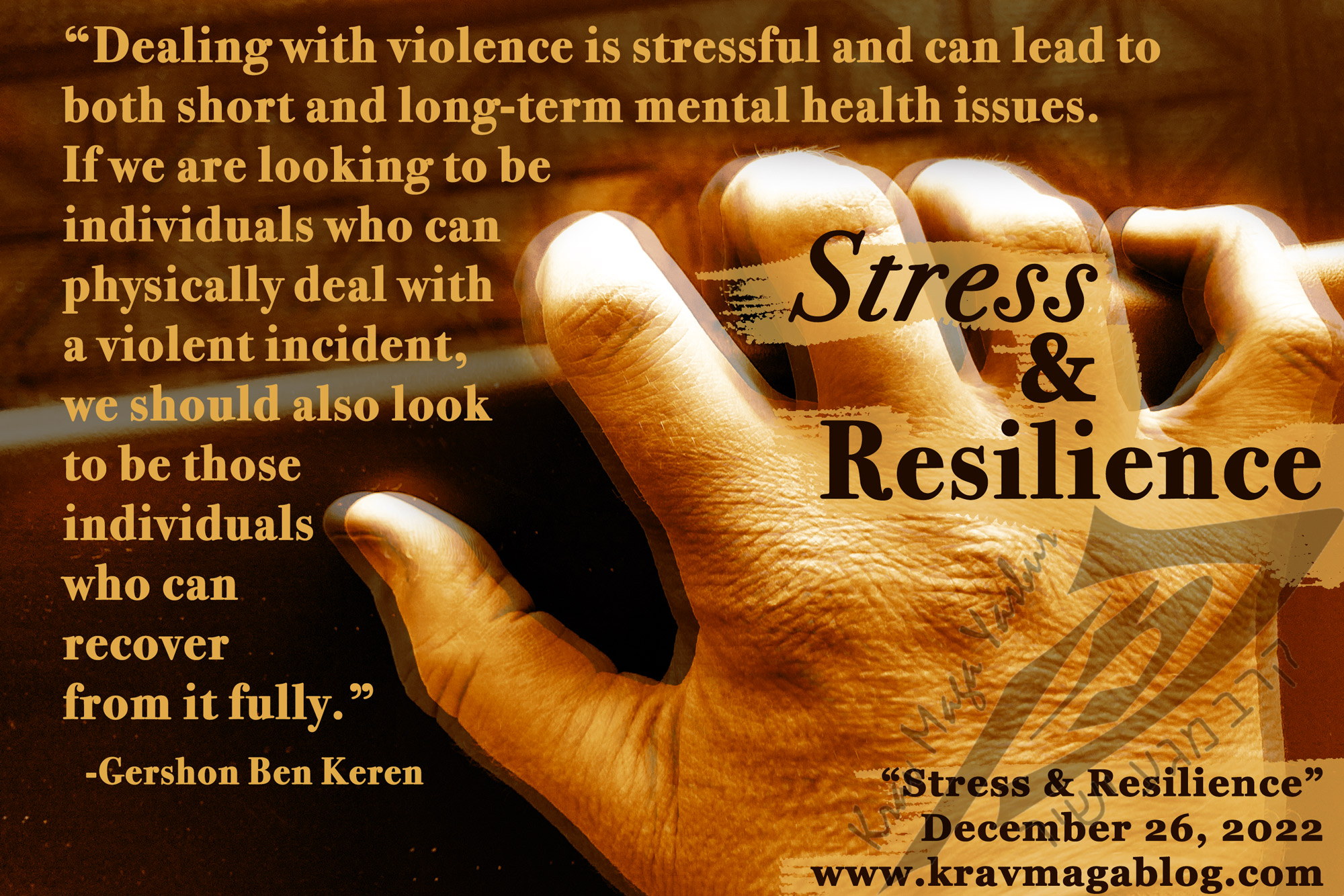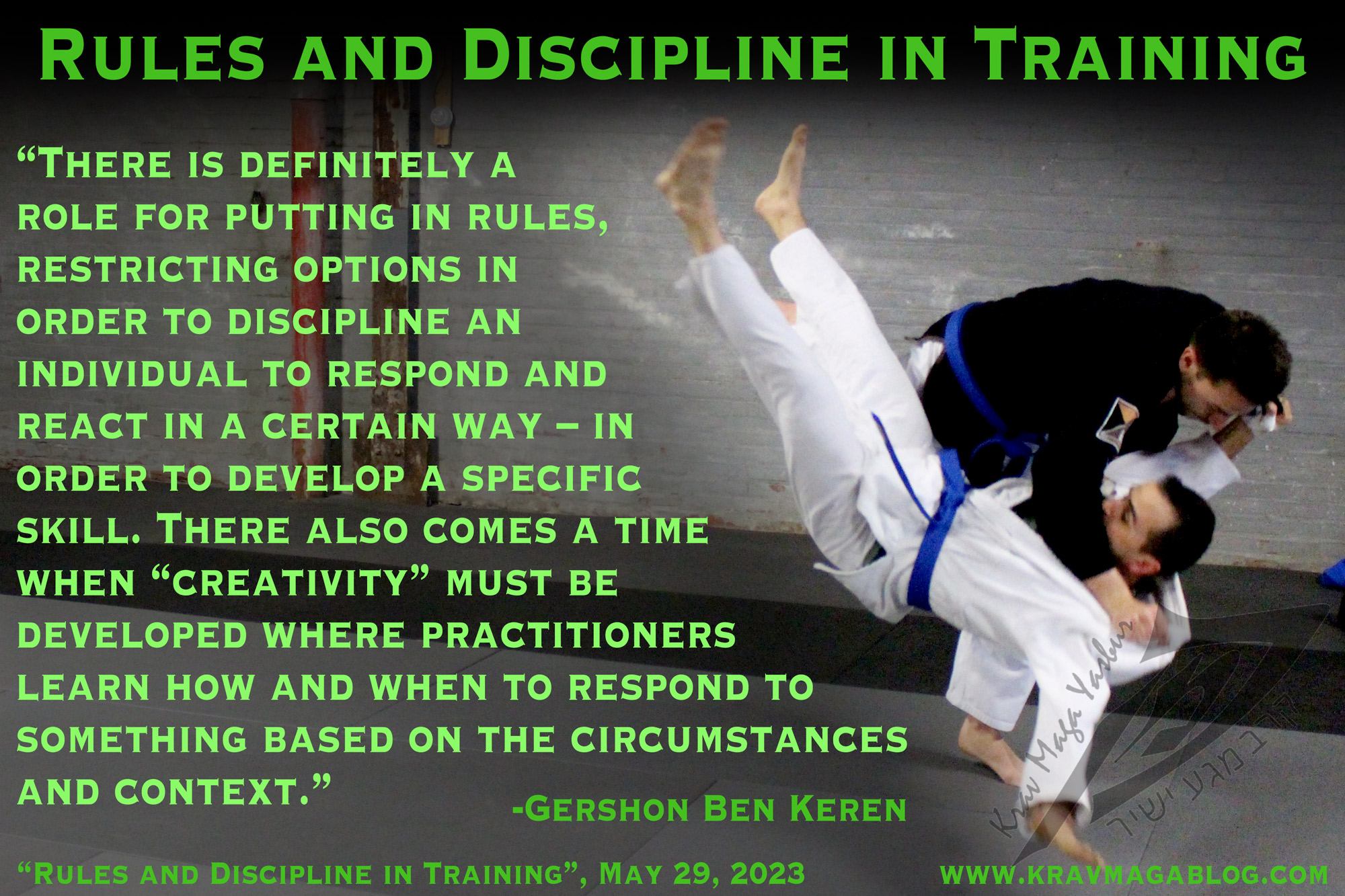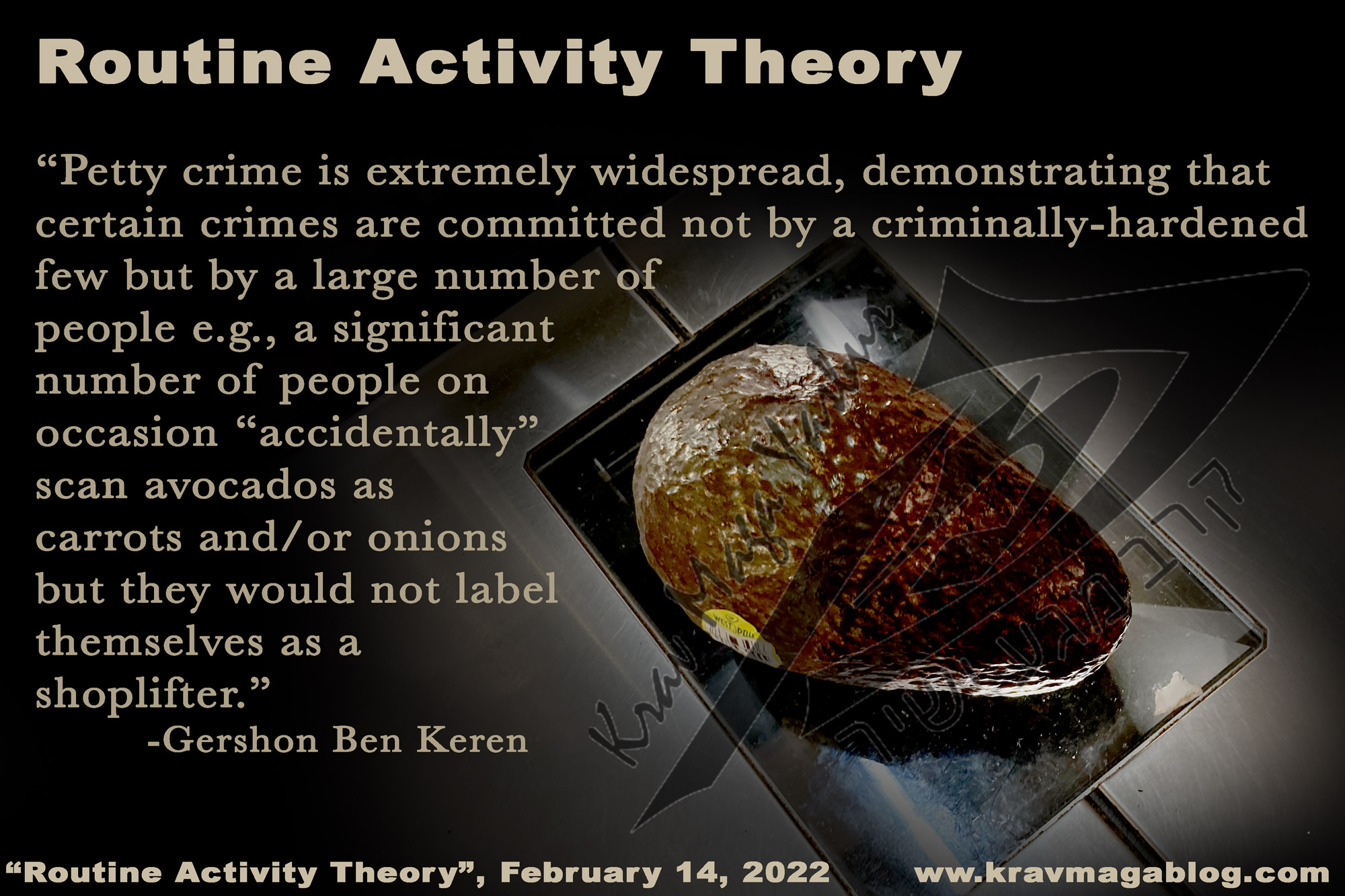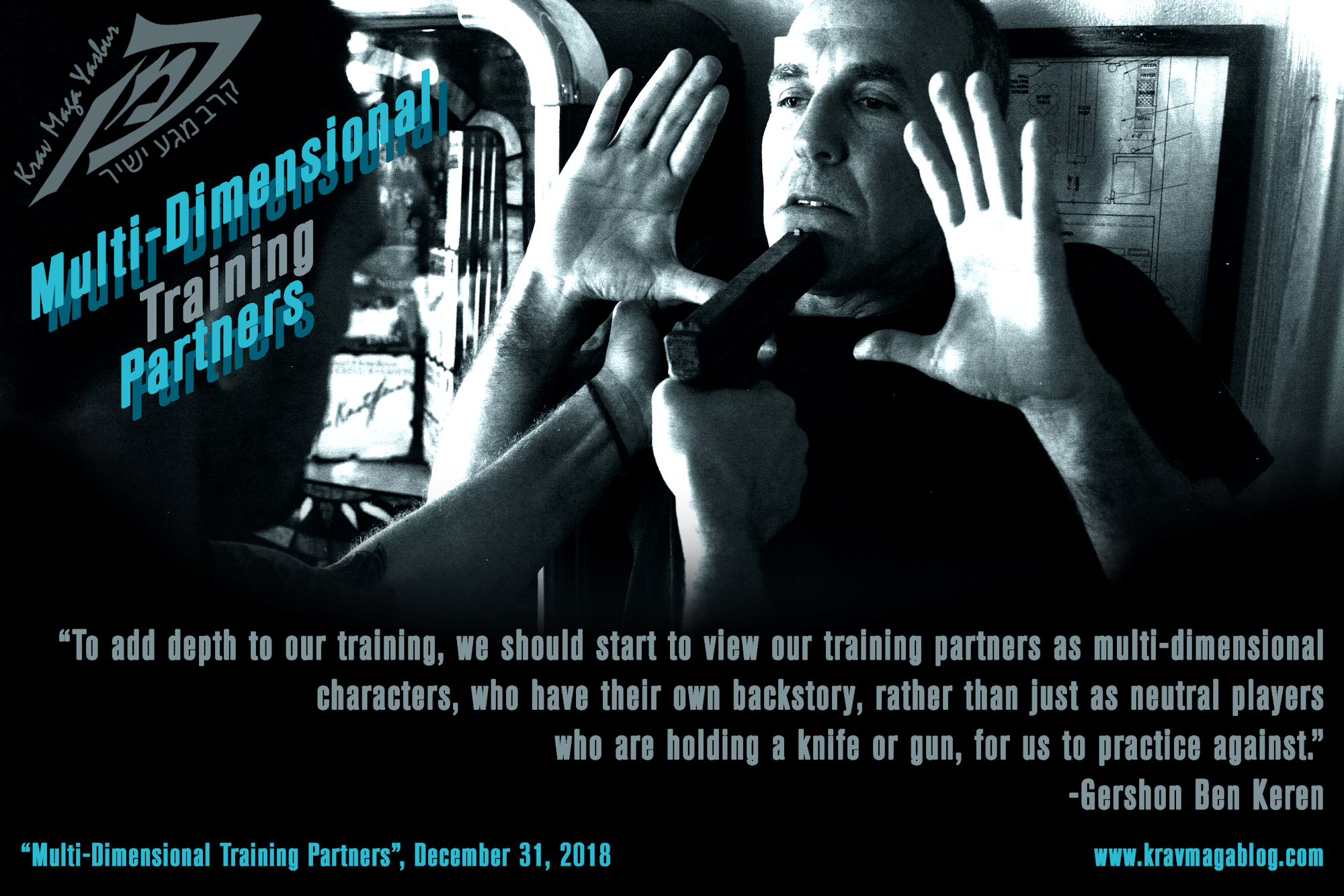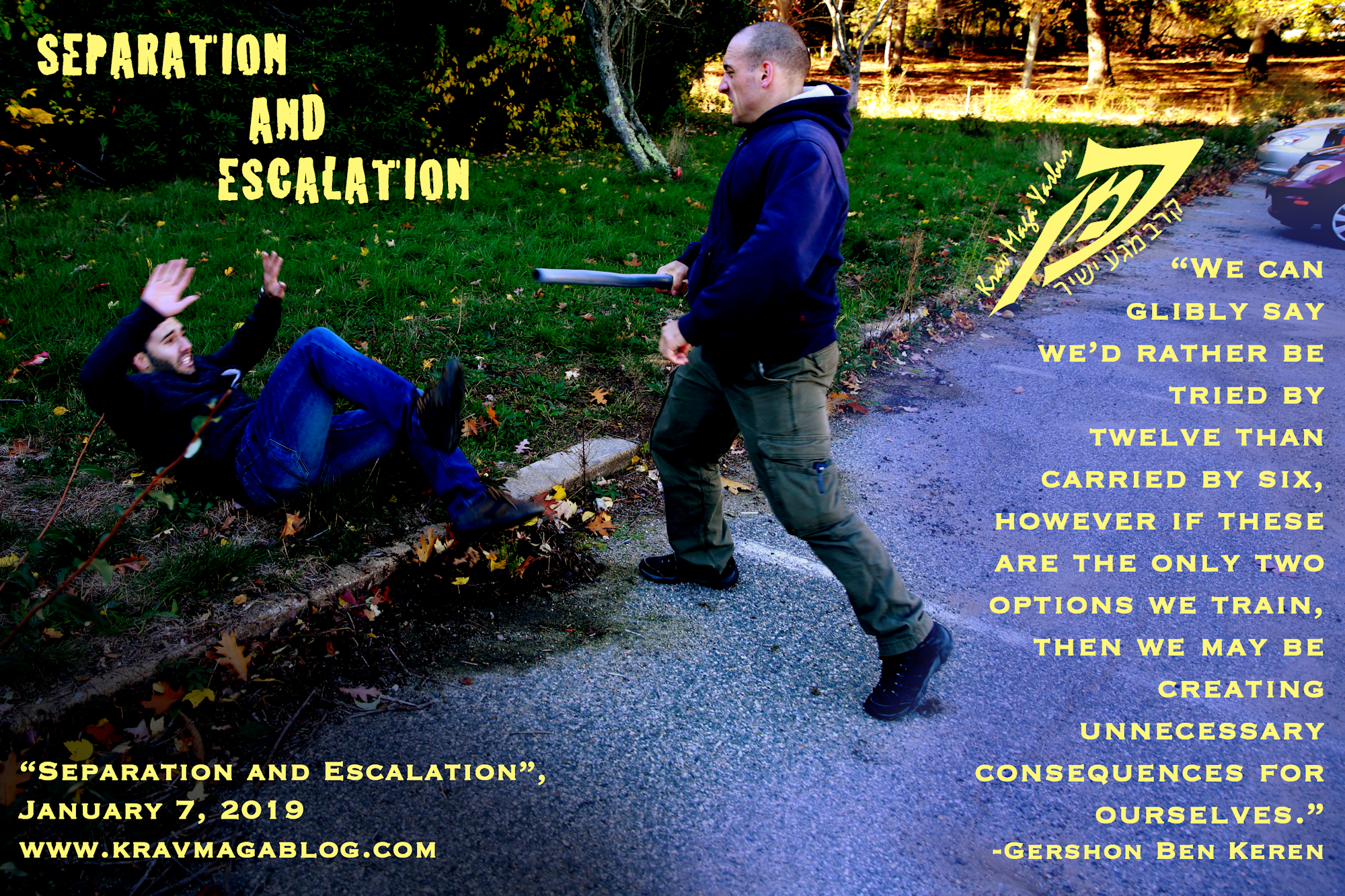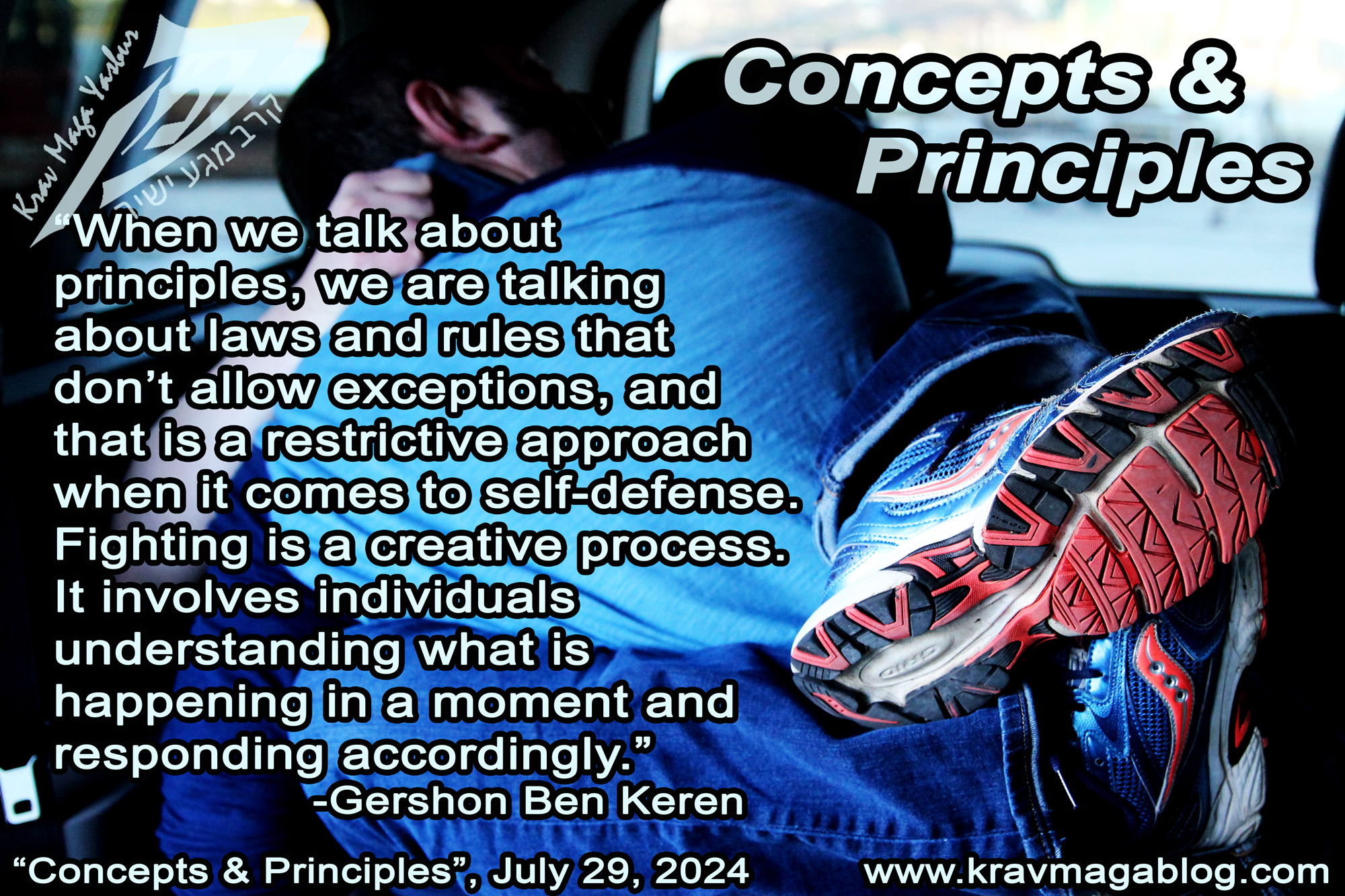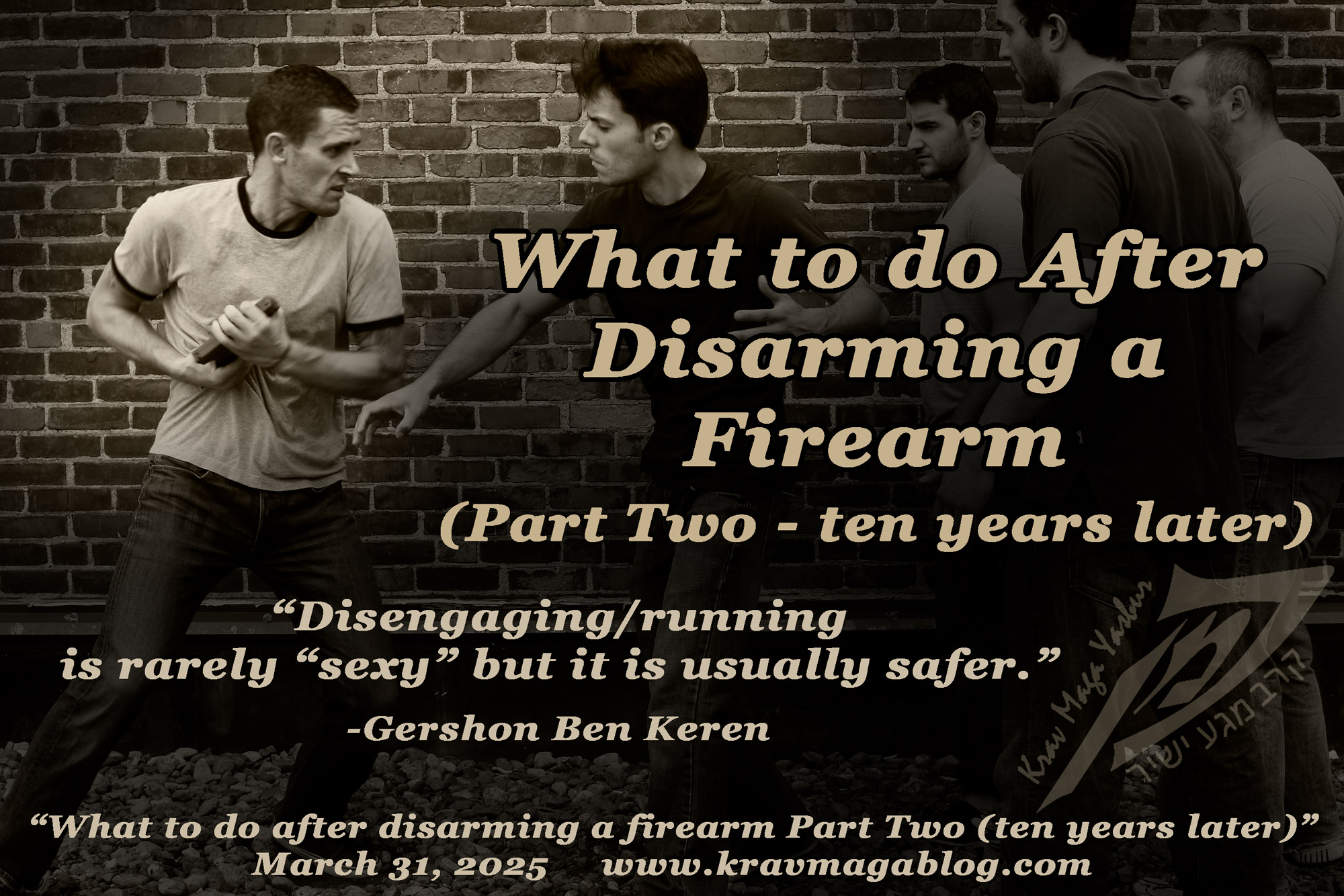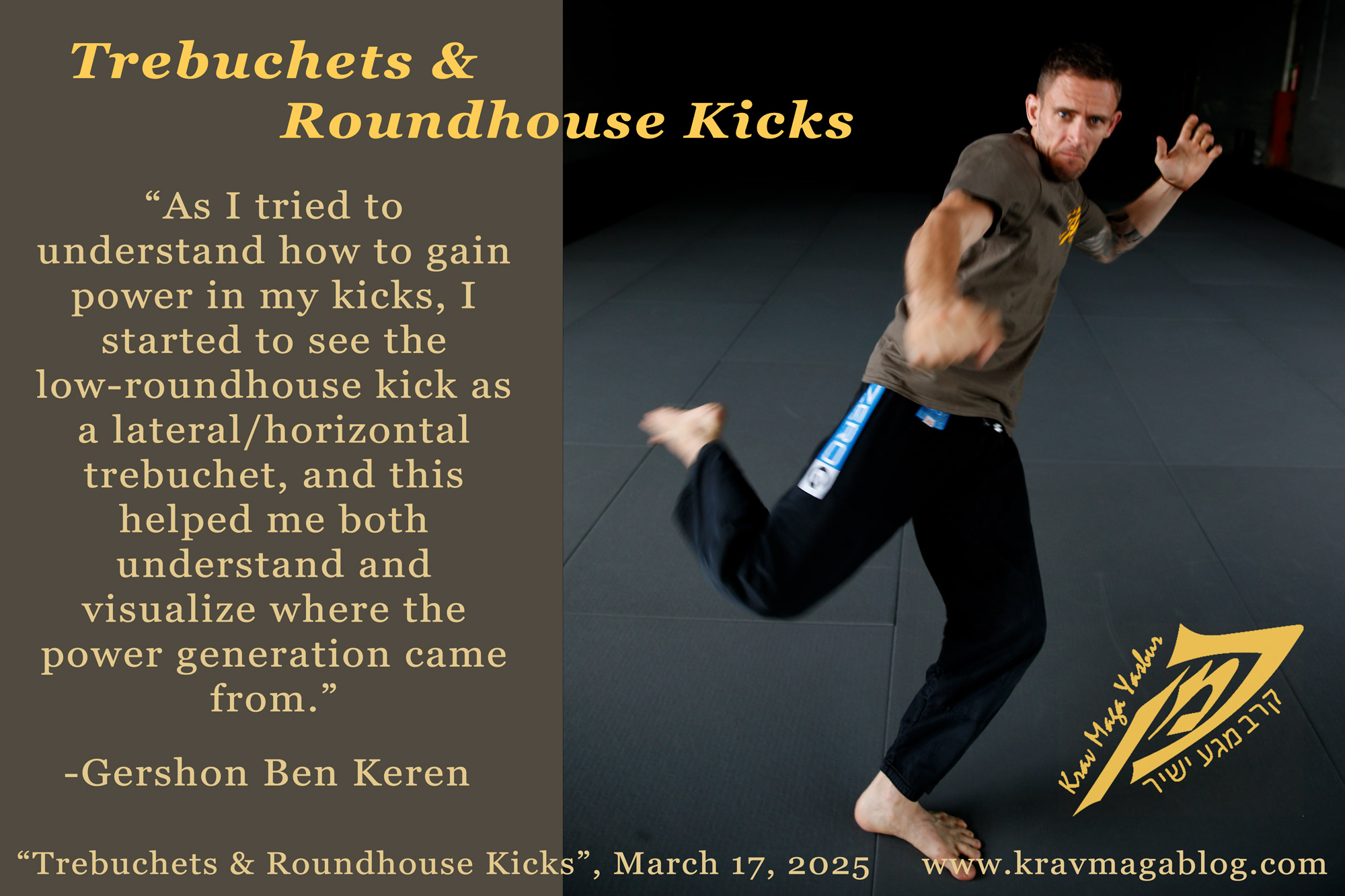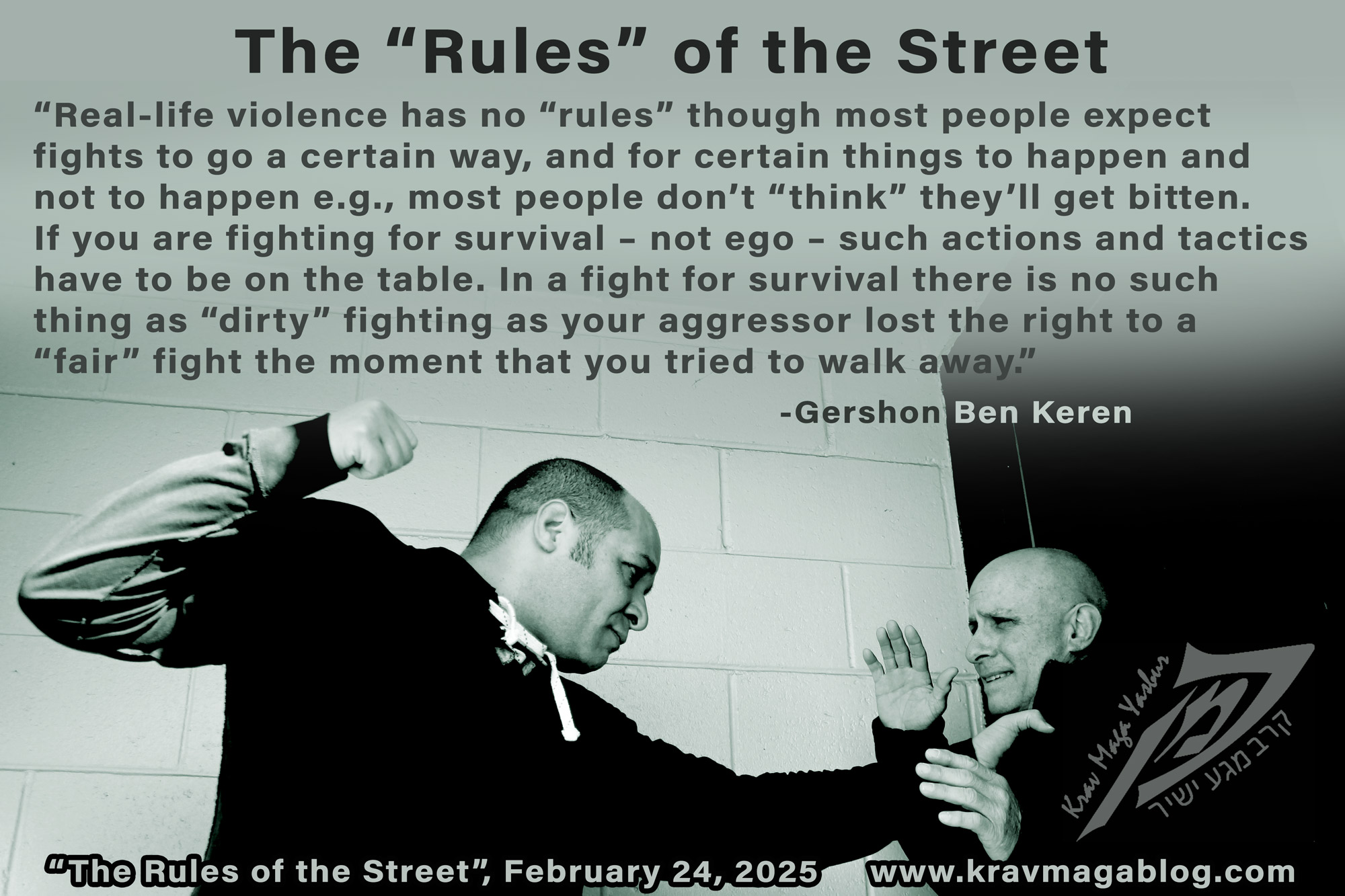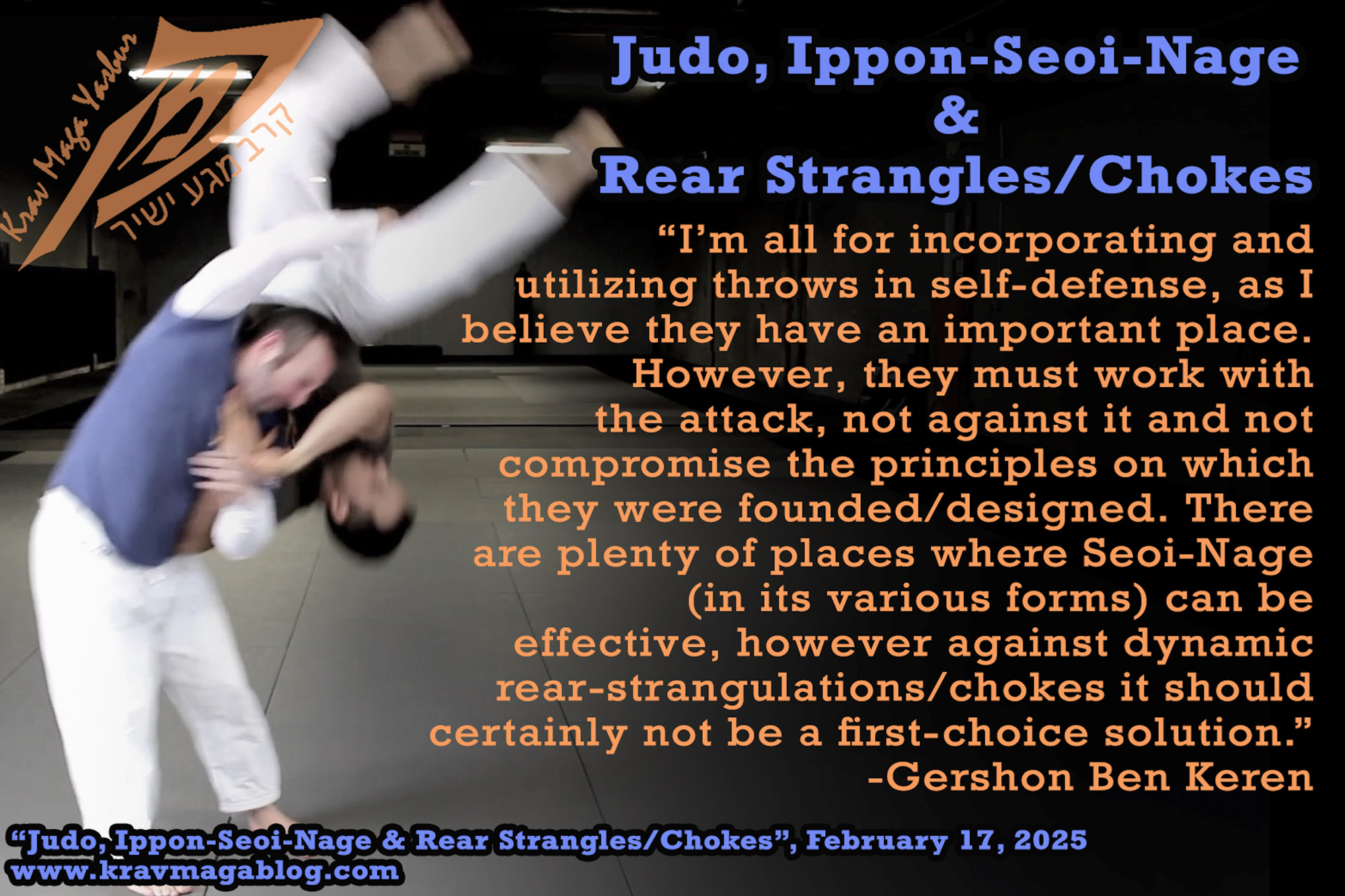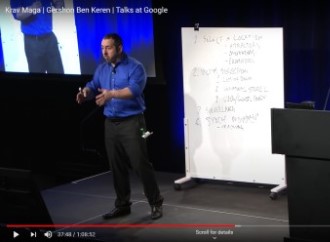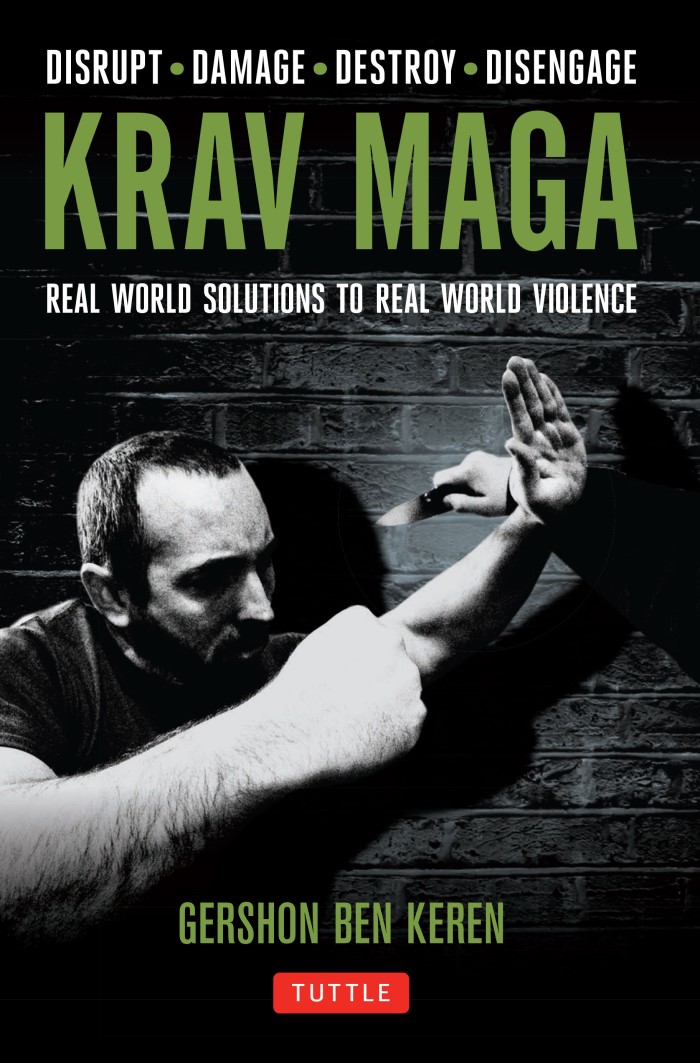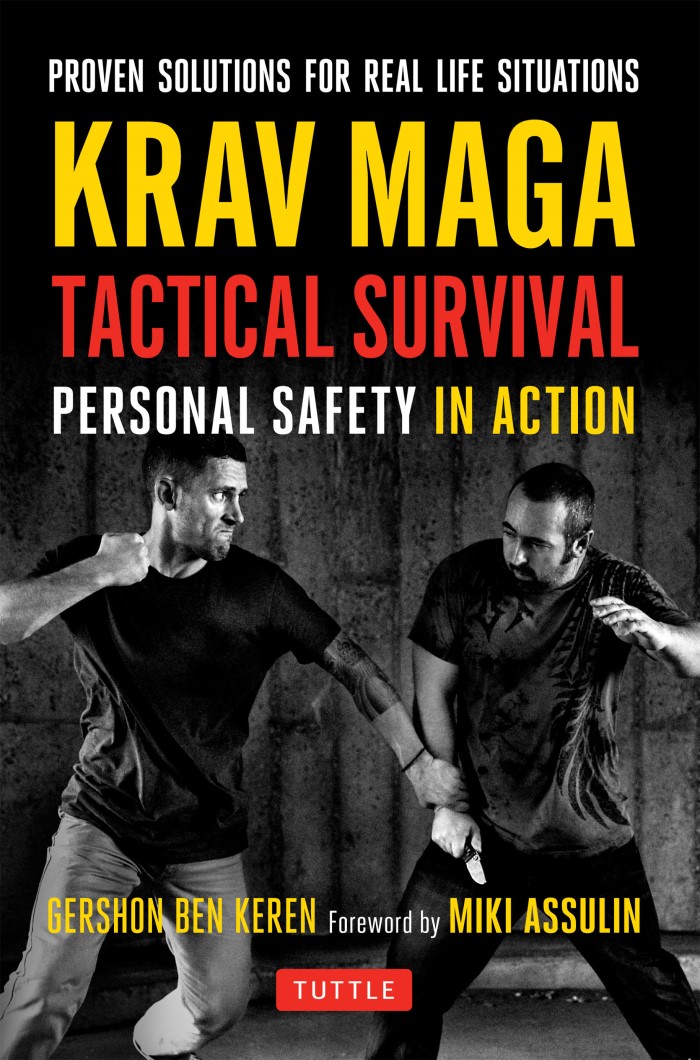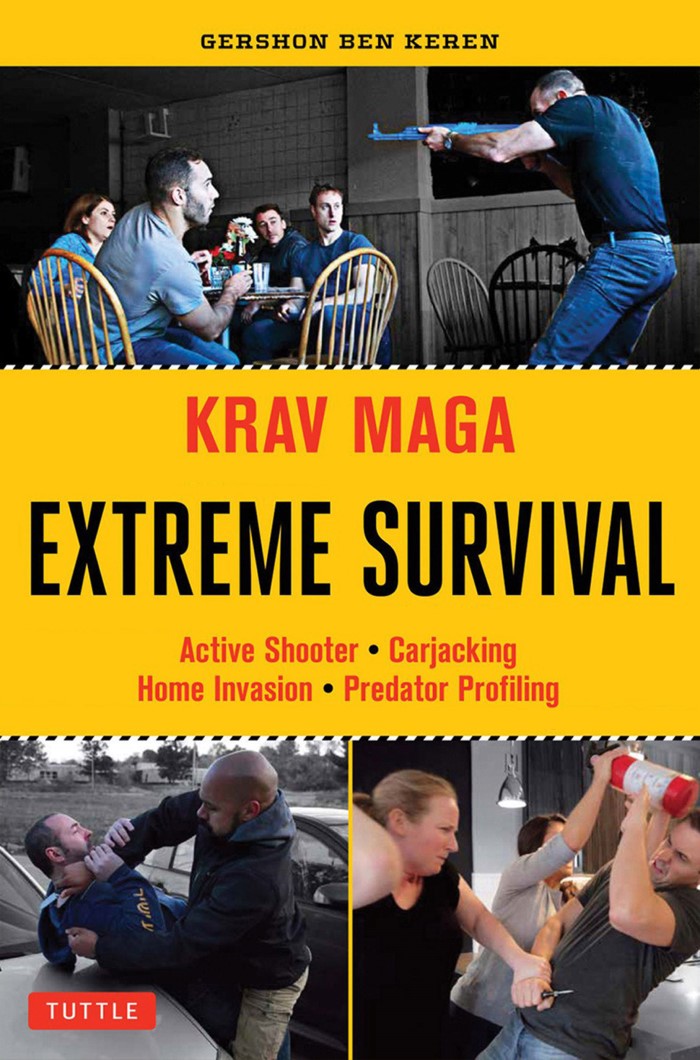Concepts & Principles, is an article written by Gershon Ben Keren, a 5th Degree Black Belt in Krav Maga, who teaches Krav Maga in Boston, MA. He has also authored three Amazon best-Selling Books on Krav Maga.
There is a difference between a principle and a concept, in the same way that there is a difference between a law/rule and an idea. Rules and laws can define something and create “absolutes” whereas concepts can simply/only guide and direct an approach/method to dealing with something. There are those that see Krav Maga as a “system” based on rigid principles; a complex mathematical equation that works according to a set of immutable – unchanging – rules and laws e.g., you should always control a weapon, you should always perform a simultaneous strike/punch when you block, you should never go to the ground etc. However, these “rules”, if followed absolutely and to the letter, can create a cage, which can cause us to doubt our abilities in the moment (have we “failed” if we don’t perform a simultaneous counter when we block?), and restrict our ability to find solutions, when our current course of action isn’t working e.g., if we are failing miserably in dealing with an assailant standing up, might we better taking them to ground and dealing with them there etc. When we talk about principles, we are talking about laws and rules that don’t allow exceptions, and that is a restrictive approach when it comes to self-defense. Fighting is a creative process. It involves individuals understanding what is happening in a moment and responding accordingly. It is not something that can be solved/dealt with using a “paint by numbers approach” i.e., when you see a one, color that area in blue, when you see a two, fill the space with red etc. Whilst it may be tempting to reduce real life violent events to such a formula e.g., when someone does X we do Y etc., in reality X may appear as a mix between W and Y. Real life violence doesn’t always present itself in the clean and sanitized form that we experience in a training environment. In this article I want to look at why techniques can fail, why immutable principles can prevent us from being effective, and why we should instead base our solutions to violence on fighting concepts.
Wag Dodge is credited with the creation of the “Escape Fire”. In 1949, Dodge, a “Smokejumper” foreman, who was leading a crew, dealing with a wildfire in Mann Gulch, created a novel solution for dealing with out-of-control fires that threatened the lives of those fighting them. Dodge realized that the fire his team was dealing with was beyond their control and was going to overtake and them and so ordered his crew to evacuate the area. As they ran up a ridge, he quickly realized that they weren’t going to be able to outrun the blaze. In that moment he had an idea. With 200 yards between him and the approaching fire he took a box of matches he had on him and started to set on fire the grass around him. Most of us have learnt at some point the “Fire Triangle” i.e., that a fire needs three things to burn: heat, oxygen and fuel. Dodge was attempting to deprive the approaching fire of the third: fuel. He managed to burn enough of an area around him that by lying down, the advancing wildfire didn’t touch him. He still felt the heat, and had issues dealing with the smoke etc., but he survived, unlike many of his crew, who he had tried to get to follow suit etc. It was his ability, in the moment, to apply his understanding of the way that fires worked which allowed him to survive. A solution which is now taught as a standard procedure for those training to deal with wildfires. It was Dodge’s creativity in applying his understanding of the way fires worked that saved him. Whilst we don’t always need to think outside the box to the extent/degree that Dodge did, we have to solve the problems that we face in a similarly creative manner. When dealing with violent incidents we are not following a set of rules and procedures but navigating a social interaction, that may have many different potential solutions, and we must be open to all of them. This doesn’t mean that we are plucking random ideas out of the air but rather that we are using our understanding of violence to guide and direct us.
Blindly following rules can cause us to make mistakes and misinterpret situations. If we work from the premise that an unknown person in our house is an intruder, and should be treated as such, then we may find ourselves acting violently against someone who means us no harm e.g., they could be a friend of one of our teenage children that we haven’t met before, who is waiting for our son or daughter, to get out of the bathroom, before going out for the evening etc. If we believe that someone climbing through a window in the early hours of the morning is an intruder looking to cause us/and our family members harm, then we may think/believe that lethal force is necessary, only to find that it is one of our kids who forgot their keys and is now breaking back into the house. Most “home invasions” are committed by drunk neighbors mistaking their house for someone else’s, and family members who have forgotten their keys etc. Taking a moment to assess, and make a considered response, is preferable to simply following a rule e.g., an unknown person in my house is by default an intruder.
This means that we have to learn how to think and assess situations and choose an appropriate and effective response. Sometimes, this means, like Wag Dodge, thinking outside the box, and applying concepts and ideas in a way that haven’t been attempted before. Dodge didn’t pick his solution at random, it was based on his understanding of how wildfires work. His solution came from an educated place and was based on many years of experience. If he had simply done what everyone before him had done which was to run, he would have probably died along with his crew who tried to outrun the fire. Rather than panicking he assessed the situation and responded appropriately and effectively. Dealing with violence doesn’t work if we follow a, do A, then B, then C approach, because fights are dynamic and ever-changing things that demand us to be creative and sometimes recognize that a “prescribed” solution, or applying a rigid principle will not work, for whatever number of reasons, and that we need to rely on ideas and concepts, along with our training and real life experiences. The techniques we learn exist to demonstrate concepts and ideas that we may apply in different ways.
0 COMMENTS